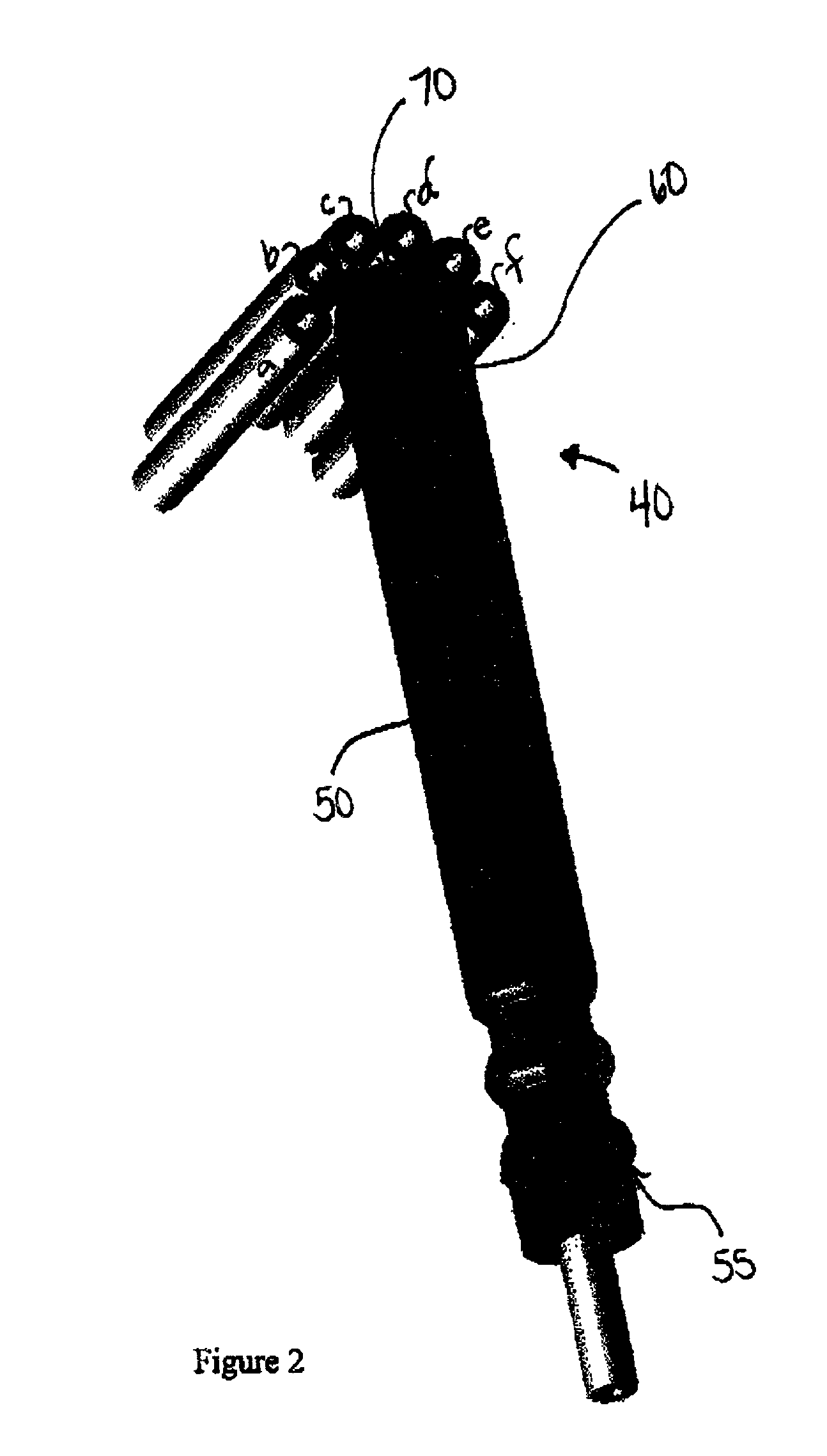Blast initiation device
a technology of initiation device and initiation tube, which is applied in the direction of blasting, fuses, weapons, etc., can solve the problems of not being able to provide for the uniform transmission of pressure impulse from the firing end of a detonator to all signal transmission lines, and the inability to propagate such impulses. the effect of limiting the range of initiation tube and initiation tub
- Summary
- Abstract
- Description
- Claims
- Application Information
AI Technical Summary
Benefits of technology
Problems solved by technology
Method used
Image
Examples
Embodiment Construction
[0131] A comparative initiation test was conducted between round bottom detonators of the present invention and conventional flat end detonators The detonators tested had an outside diameter of 7.5 mm and an inside diameter of 6.65 mm. The round bottom detonators had a closed hemispherical firing end having a diameter uniform with the inside diameter of the detonator body.
[0132] All test detonators were loaded with 200 mg of lead azide as the explosive material and pressed with a flat end punch at a force of 445 Newton. A lead delay element containing a pyrotechnic delay composition of silicon and red lead was inserted on top of the explosive composition and pressed at a force of 1180 Newton, Each test detonator further received an isolation cup, a rubber bushing and a two meter length of input shock tube and subsequently crimped into place
[0133] The test detonators were each mounted into a conventional connector block proximate five output shock tubes. The opposite ends of these ou...
PUM
 Login to View More
Login to View More Abstract
Description
Claims
Application Information
 Login to View More
Login to View More - R&D
- Intellectual Property
- Life Sciences
- Materials
- Tech Scout
- Unparalleled Data Quality
- Higher Quality Content
- 60% Fewer Hallucinations
Browse by: Latest US Patents, China's latest patents, Technical Efficacy Thesaurus, Application Domain, Technology Topic, Popular Technical Reports.
© 2025 PatSnap. All rights reserved.Legal|Privacy policy|Modern Slavery Act Transparency Statement|Sitemap|About US| Contact US: help@patsnap.com



